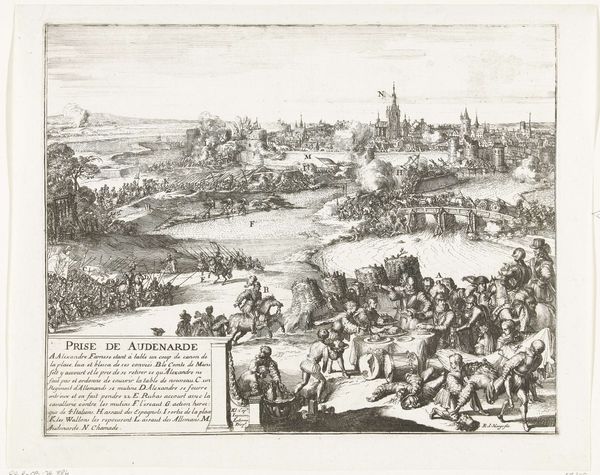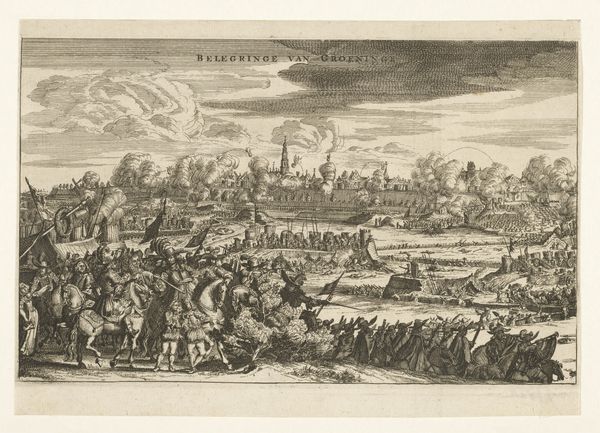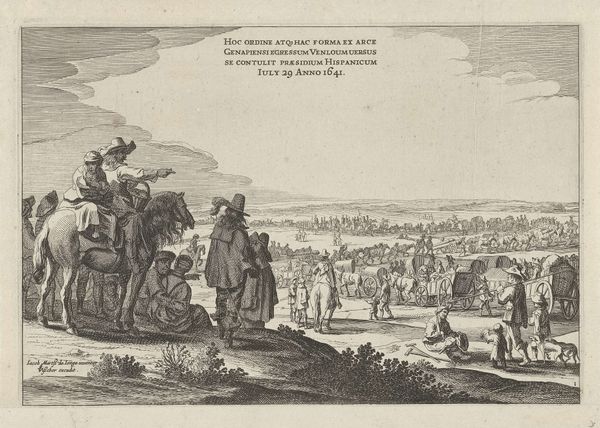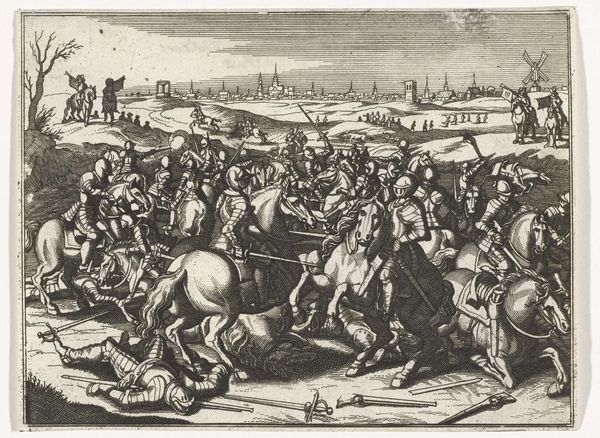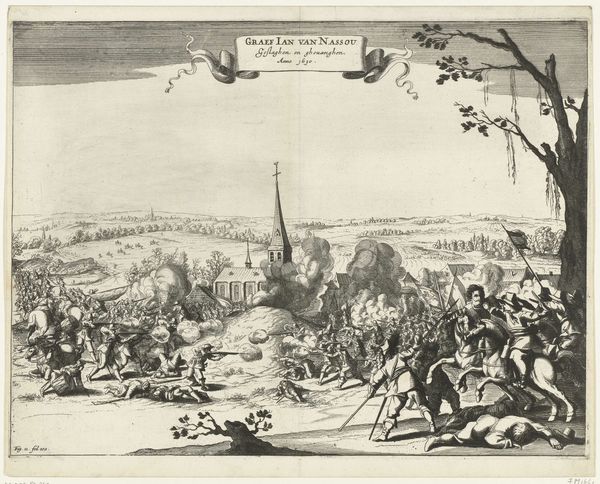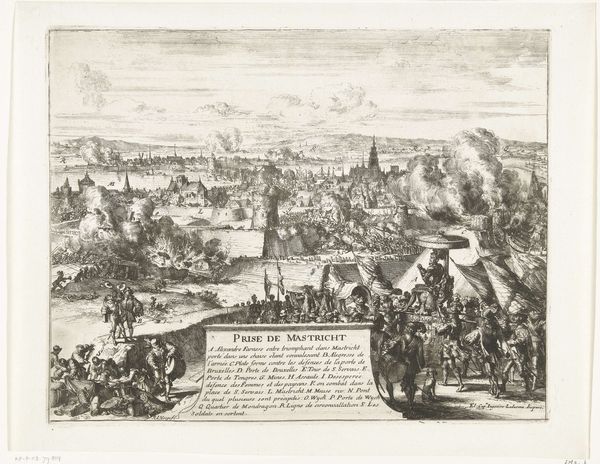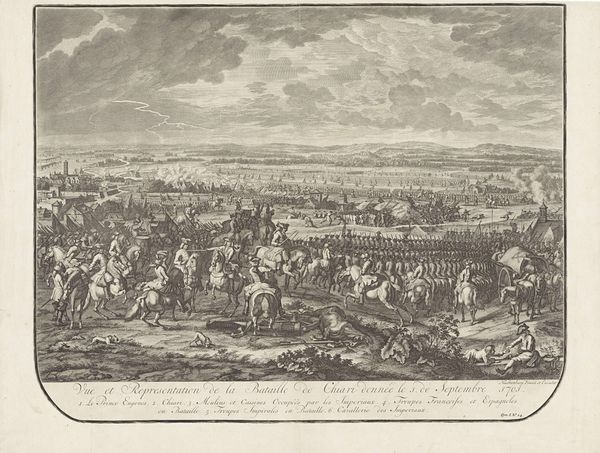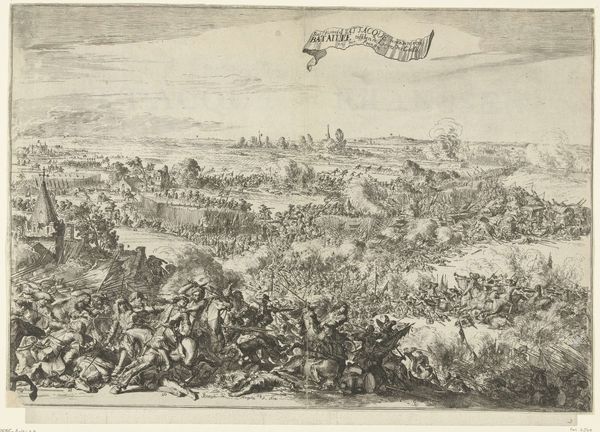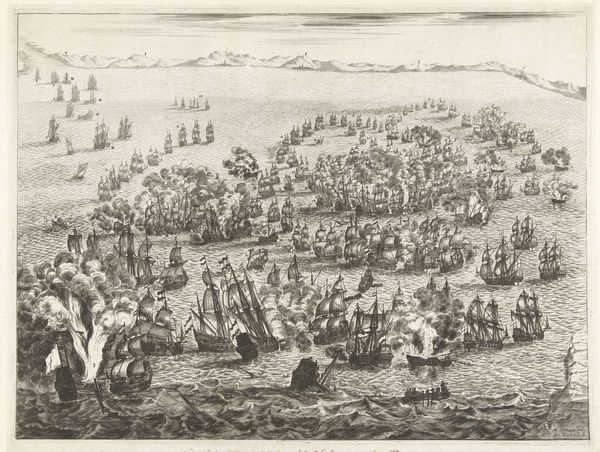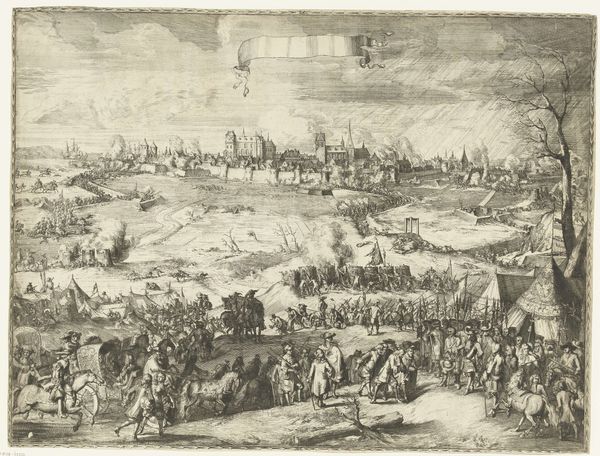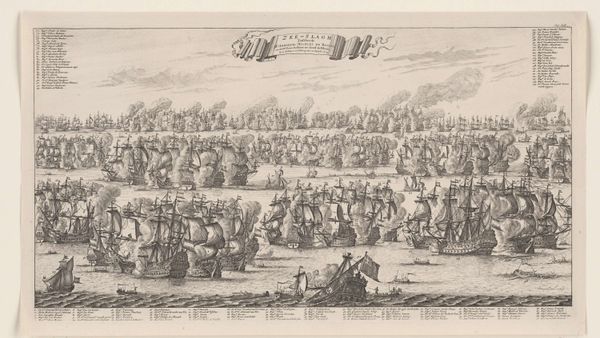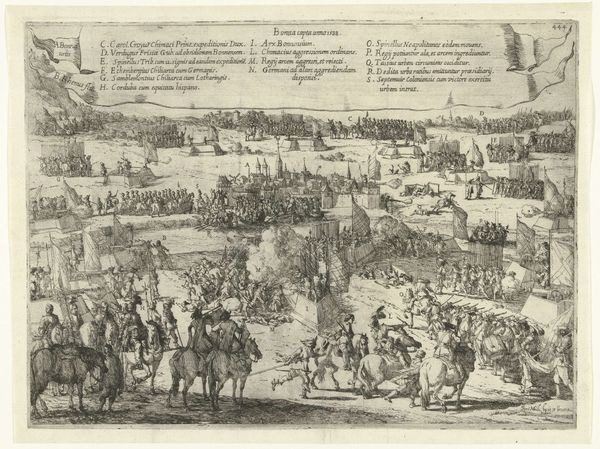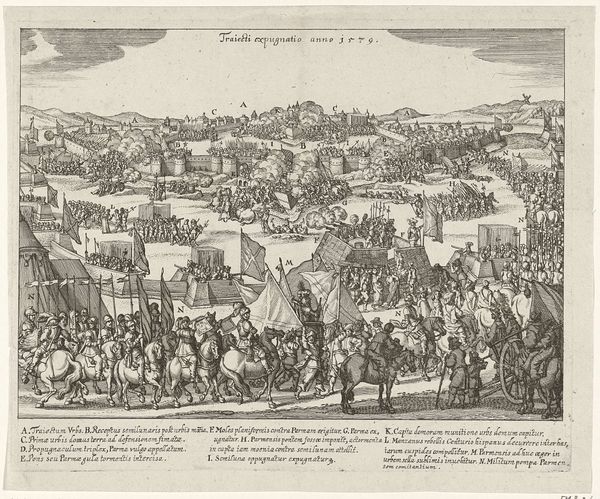
Uittocht van het Spaanse garnizoen uit Hulst (blad a), 1645 1645
0:00
0:00
claesjanszvisscher
Rijksmuseum
print, engraving
#
narrative-art
#
baroque
#
dutch-golden-age
# print
#
landscape
#
line
#
cityscape
#
history-painting
#
engraving
#
realism
Dimensions: height 237 mm, width 292 mm
Copyright: Rijks Museum: Open Domain
Curator: This engraving, titled "Uittocht van het Spaanse garnizoen uit Hulst" from 1645, captures the Spanish garrison leaving Hulst. Claes Jansz. Visscher is the artist, and the Rijksmuseum holds this historical document. Editor: The use of line here is quite striking, it gives a sense of vastness but also busyness in a relatively small composition. There's so much movement. Curator: Indeed. It reflects a pivotal moment during the Dutch Golden Age when Hulst was recaptured. The engraving's realism helps to communicate the scale of these events in print. The visual culture of this period served to immortalize such victories, which bolstered the sense of a unified Dutch identity. Editor: Note how the artist chose to portray so many different levels of society: some on horses, others with wagons and carts, families and individuals leaving. It feels as though Visscher attempted to portray the whole range of emotions. Curator: This ties into the broader theme of narrative-art. Artists in this era were frequently commissioned to record important moments for didactic and propaganda purposes. Consider the visual vocabulary used: the Spanish flag, the posture of the leaving soldiers – elements which aimed to emphasize a transfer of power. Editor: Looking at the very delicate, yet powerful rendering of figures and landscape, you see an incredible commitment to clarity of line which supports both detail and scope. Visscher’s hand brought sensitivity to historical narrative. Curator: I agree. Engravings like these functioned almost like early news images. They played a crucial role in shaping public perception and collective memory during the ongoing war. They would circulate throughout the Dutch Republic, reinforcing a national narrative and sense of triumph. Editor: These linear constructions give such immediacy that almost obscures their underlying sociopolitical motives! The hand, eye, the burin; simply beautiful and direct. Curator: Precisely! Examining this engraving, we gain a deeper understanding of the era’s politics and visual culture. Editor: Well put, I couldn't agree more with your summary!
Comments
No comments
Be the first to comment and join the conversation on the ultimate creative platform.
